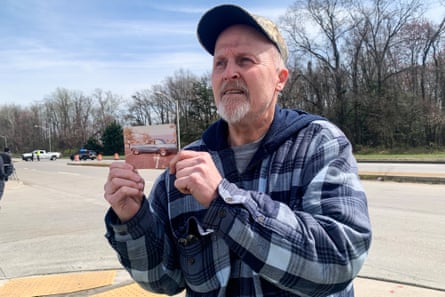‘It seems impossible’: Baltimore residents grapple with bridge collapse
Видео по теме
Across Baltimore residents were struggling to make sense of what had happened after waking up to news of the collapse of the Francis Scott Key Bridge, one of the city’s main thoroughfares. “It seems impossible,” said Reginald Jones, a 67-year-old Baltimore resident.
The bridge crumpled into the Patapsco River like a house of cards at 1.30am on Tuesday after it was struck by a giant cargo ship leaving the city’s port.
The Maryland governor, Wes Moore, declared a state of emergency shortly afterward, and the Maryland Port Administration announced on the suspension of vessel traffic into and out of Baltimore’s port until further notice.
Jones lives in Cherry Hill, just five miles from the disaster. He grew up playing sports beside the bridge at Fort Armistead Park.
An amateur photographer, Jones has in recent years often driven to the bridge to take long-exposure photographs of it and the view below. “My wife woke me up this morning to tell me the news,” he said. “I couldn’t believe it.”
Jones and other residents gathered at a convenience store near the entrance of the bridge on Tuesday morning – the closest they could get to the scene.
A search is under way for at least six construction workers who remained unaccounted for on Tuesday afternoon. According to the Maryland Transportation Authority, they were working to repair potholes.
Jesús Campos, a construction worker for the company Brawner Builders, said the workers were low-income immigrants from Central America and Mexico. Their labor helps them support family members here and abroad, he said.
He himself worked the overnight shift on the bridge until one month ago when he was transferred to daytime hours. “It’s a difficult situation,” he said from the convenience store parking lot, speaking through a translator. “My friends were working on that bridge.”
The Francis Scott Key Bridge was one of just three ways to cross the Baltimore Harbor, and connected those driving between Washington DC and New York.
“There’s going to be a real bad effect on our traffic,” said Jones.
An estimated 11.5m vehicles crossed the bridge every year, with an average daily traffic of 31,500 vehicles.
“If it had been during the day that it collapsed, I’m telling you, there would have been hundreds of cars on that thing,” said Christopher Romey, a 62-year-old resident of Baltimore’s Brooklyn Park neighborhood, four miles from the bridge.

Romey said he went fishing off the bridge until 6pm on Monday, just hours before it collapsed.
“I’m glad I got to see the bridge one more time,” he said.
Romey watched crews build the Francis Scott Key Bridge in the 1970s. He was carrying a photograph of himself in a car beside the bridge from the 1980s.
“I grew up on that bridge, with that bridge,” he said. “I just can’t believe it’s gone.”
Members of Arundel Christian church, four and a half miles from the bridge, congregated in the convenience store parking lot on Tuesday hoping to provide support for families in need.
Baltimore’s is among the nation’s top ports for importing and exporting automobiles, handling 847,158 cars and light trucks in 2023, according to data from the port. Its closure could have harsh effects on the national economy.
John Chenery, the church’s overseer, said he and other church leaders will work to take care of families in need in the wake of the disaster.
“We’ll provide prayers, and we’ll also provide food and what’s needed,” he said.
Joe Biden said on Tuesday afternoon the federal government will pay for the cost to rebuild the destroyed bridge, and called on Congress to support those efforts. In addition to focusing on search and rescue, he said, officials would work to reopen the city’s port “as soon as humanly possible”, noting that 15,000 jobs depend on the port.
John Currence, a member of Arundel Christian church and former merchant marine officer at the church, said he expected the closed port will have cascading effects for the Baltimore economy.
“It’s going to impact economically a lot of [local] businesses,” he said.
John Lucia, a 37-year-old resident of Glen Burnie, Maryland, four miles from the bridge, has also photographed the bridge for years. He often spent late nights at Fort Armistead Park with friends having bonfires until 1 or 2am, the bridge in the background. It was his “home away from home”, he said.
“Aside from the actual tragedy of it all with six people still missing of course, there’s the icon itself being gone,” he said. “It’s jarring, and it’s going to be really weird to look at that vista and just not see the bridge any more.”